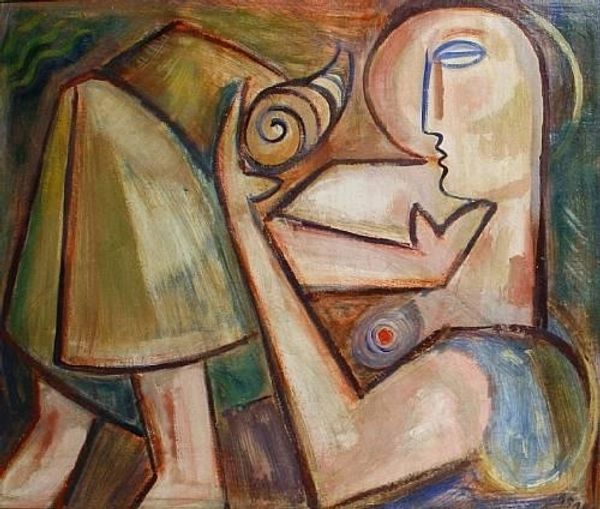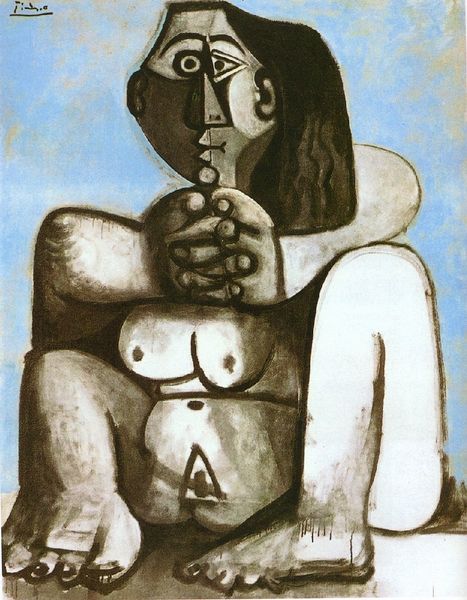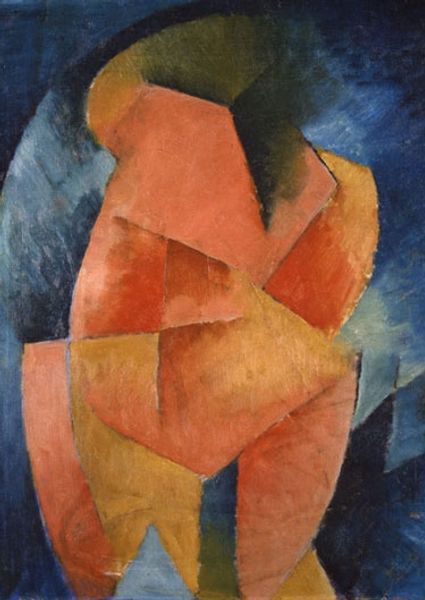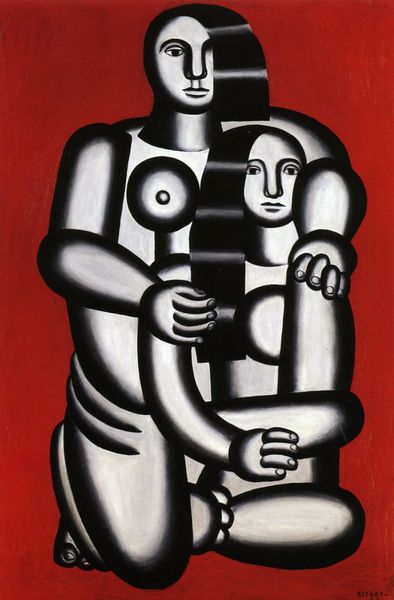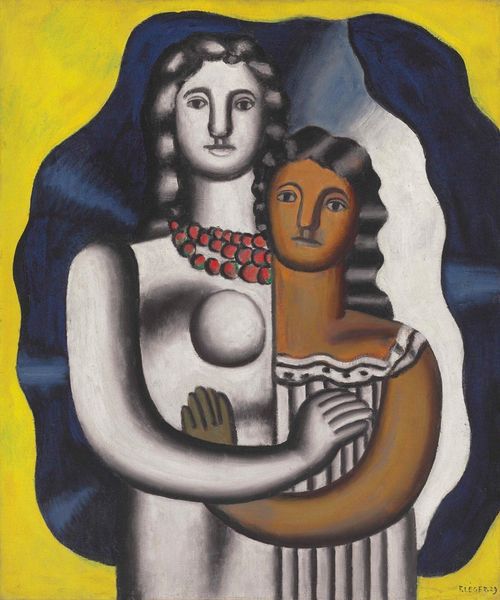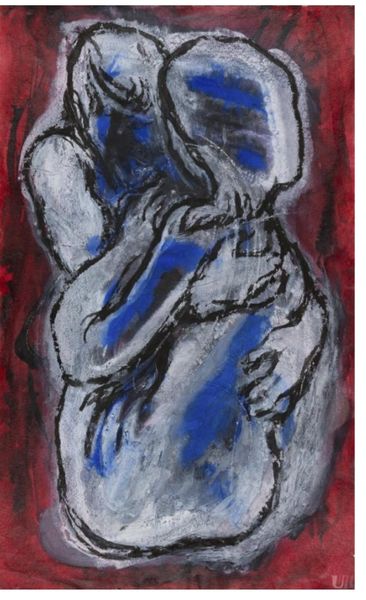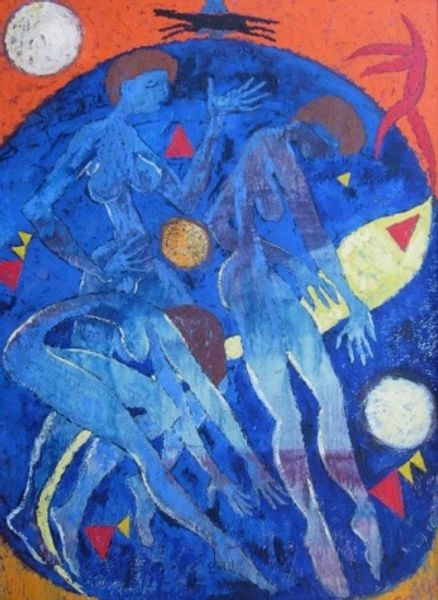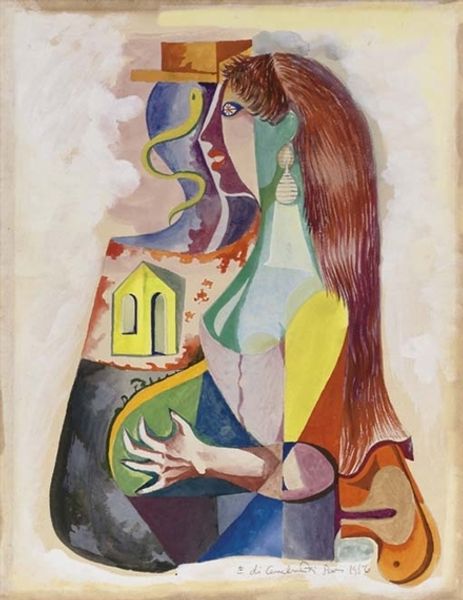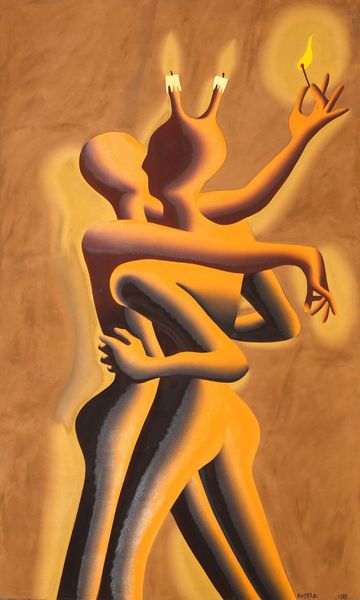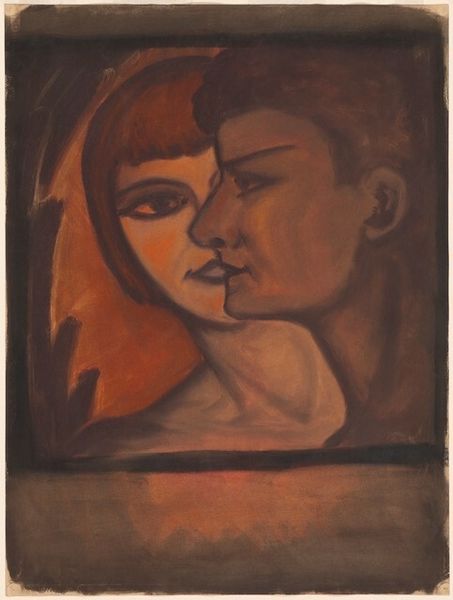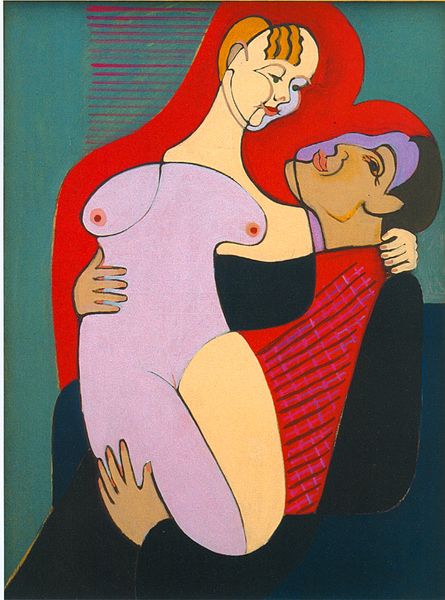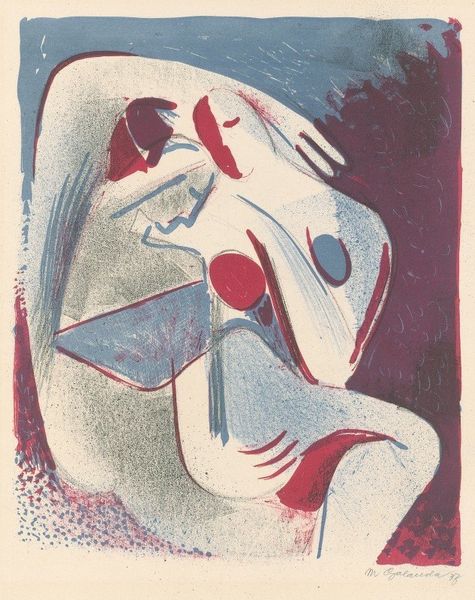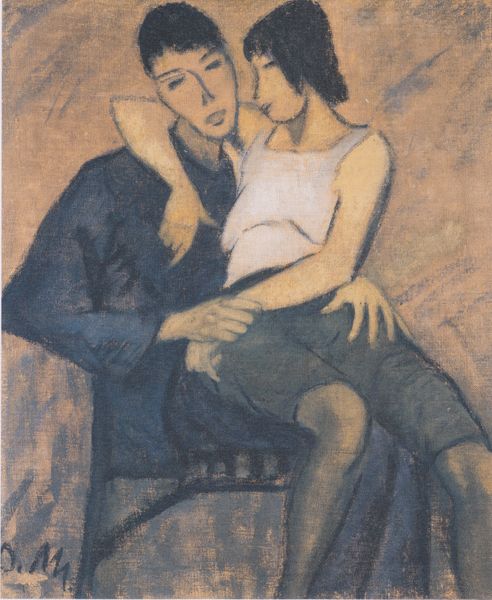
Copyright: Oswaldo Guayasamin,Fair Use
Curator: This 1989 oil painting by Oswaldo Guayasamín is titled "Ternura," meaning "Tenderness" in Spanish. The figures are locked in a powerful embrace, yet I'm struck by their fragility. What is your immediate reaction? Editor: Those eyes! So large, so haunted. There's tenderness suggested in the title, yet I mostly perceive a kind of desperate need. The way the figures cling to each other… it’s unsettling, isn't it? The color palette certainly isn't gentle, the umber and shadowy tones add weight and dread to this image of suppossed 'tenderness'. Curator: Guayasamín often used expressive figuration to depict suffering and social injustice, deeply rooted in his experiences growing up in Ecuador. Notice how the bodies are almost skeletal, almost as if drained, accentuating the feeling you described, this need. The simplified, almost mask-like faces also suggest universal human experiences rather than specific individuals. Editor: The positioning is evocative too. The upper figure rests its face almost forlornly on top of the child; is it of protection? resignation? The darkness between the figures, how their hands grip each other… these aren’t soft hands of comfort, are they? They're bony, clinging for dear life! Guayasamín’s distortion conveys how the weight of their interconnectedness is really palpable; not like holding; but hanging on. Curator: It's a dance between comfort and burden, love and anguish. These intertwined figures, a frequent theme throughout Guayasamin’s work, suggest enduring emotional ties. The brushstrokes too—thick, expressive, almost violent in their application. Do you read these symbol as representing a specific event? Editor: I see it echoing across historical representations, from ancient fertility figures locked together as they appear in shrines, and other symbolic imagery with overlapping symbolism of suffering, connection, family unity through difficult circumstances; all rendered starkly. There's both ancient archetype, and recent past. "Tenderness" becomes so very complex with that awareness. It asks me, the viewer: Is tenderness always a good thing? Is this supposed bond of 'tenderness' born out of oppression? Curator: Well, my perception has certainly shifted now that I can truly see the emotional load carried by the artist here, and how it translates into a piece that resonates so heavily. Editor: And for me, it transforms ‘tenderness’ from a simple hug, into the most courageous form of human connection amidst great anguish. It really does change everything about how one reads the whole piece.
Comments
No comments
Be the first to comment and join the conversation on the ultimate creative platform.
